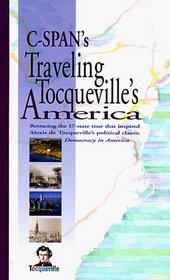Search -
Traveling Tocqueville's America : A Tour Book (Distributed for C-SPAN)
Traveling Tocqueville's America A Tour Book - Distributed for C-SPAN
Author:
Alexis de Tocqueville and Gustave de Beaumont's travels in America in 1831-32 have recently become the subject of renewed interest, as a C-SPAN special program has retraced the Frenchmen's journey by broadcasting each week from a different city along the route. Now the Tocqueville rediscovery continues with the publication of this unique guidebo... more »
Author:
Alexis de Tocqueville and Gustave de Beaumont's travels in America in 1831-32 have recently become the subject of renewed interest, as a C-SPAN special program has retraced the Frenchmen's journey by broadcasting each week from a different city along the route. Now the Tocqueville rediscovery continues with the publication of this unique guidebo... more »
ISBN-13: 9780801859663
ISBN-10: 0801859662
Publication Date: 6/3/1998
Pages: 256
Rating: 1
ISBN-10: 0801859662
Publication Date: 6/3/1998
Pages: 256
Rating: 1
3.5 stars, based on 1 rating
Publisher: The Johns Hopkins University Press
Book Type: Paperback
Other Versions: Hardcover
Members Wishing: 0
Reviews: Amazon | Write a Review
Book Type: Paperback
Other Versions: Hardcover
Members Wishing: 0
Reviews: Amazon | Write a Review
Genres:
- History >> Americas >> United States >> 19th Century >> General
- Travel >> United States >> Regions >> General




